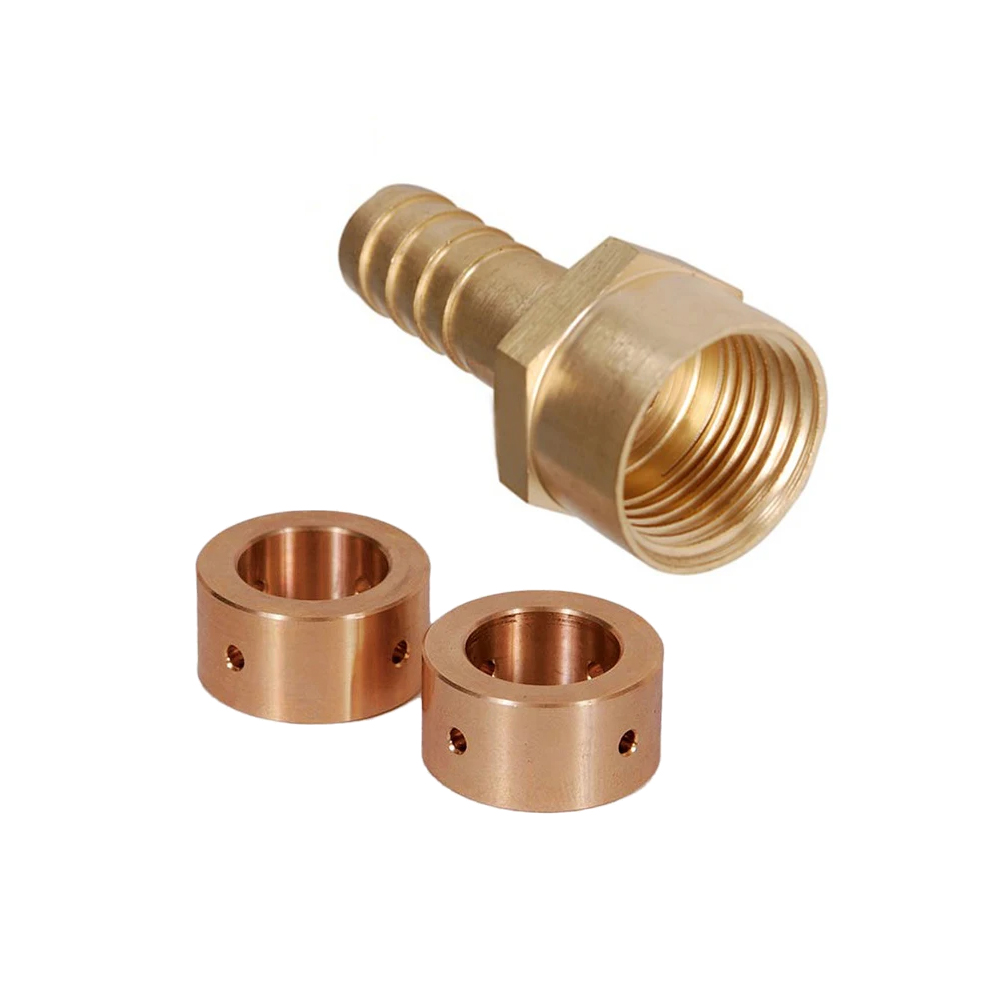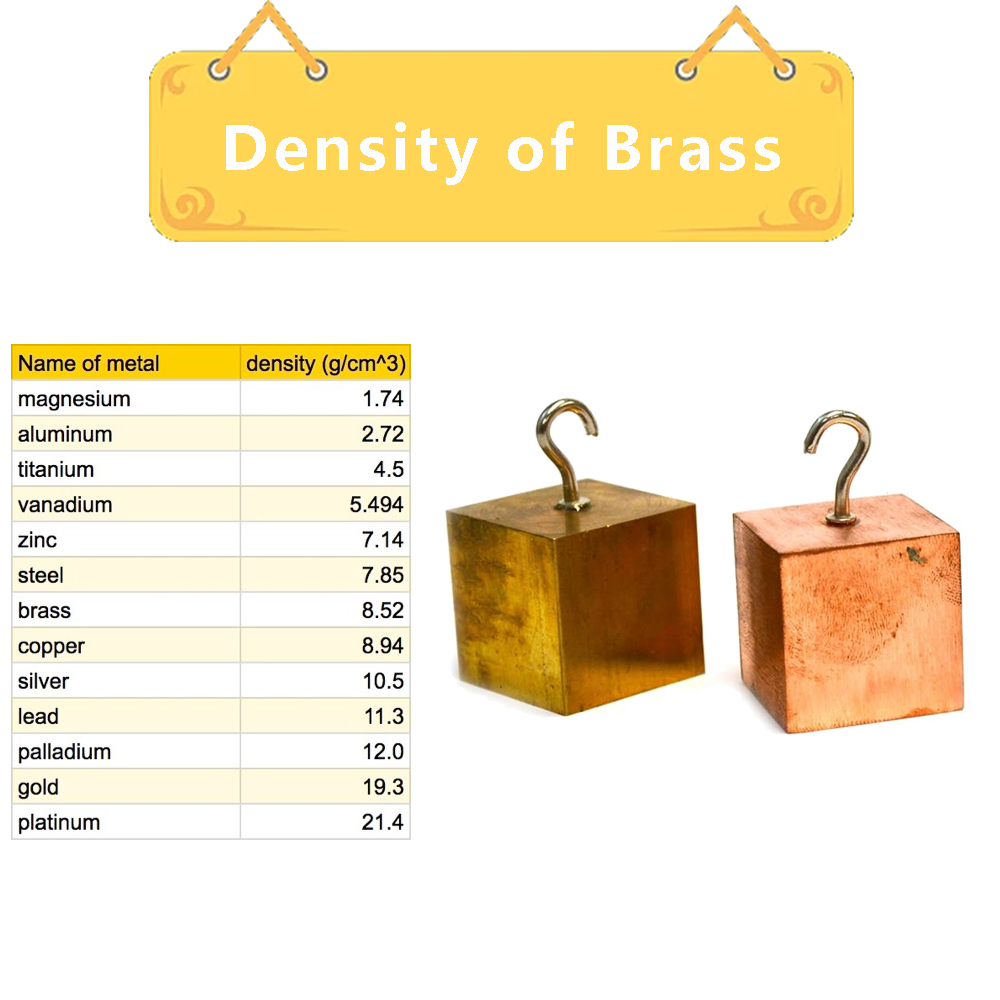What is the Density of Brass? A Comprehensive Guide
 Jun 28,2024
Jun 28,2024

Brass is an essential material widely used in various industries due to its excellent properties. These properties include corrosion resistance, electrical conductivity, and machinability. Understanding the density of brass is crucial for professionals in the manufacturing and mechanical engineering fields. At Tuofa, we specialize in precision CNC machining. We have extensive knowledge of material properties. This ensures the highest quality and performance in all our products.
What is Brass?
Brass is an alloy primarily composed of copper and zinc. The ratios of these two elements can vary, resulting in different types of brass with distinct properties. Here are some common types of brass used in industries:
|
Type of Brass |
Composition |
Properties |
|
Alpha Brass |
Contains less than 35% zinc |
Ductile, can be cold worked, good for bending and deep drawing |
|
Alpha-Beta Brass (Duplex Brass) |
Contains 35-45% zinc |
Combines good strength with ductility, suitable for hot working |
|
Beta Brass |
Contains 45-50% zinc |
Hard and strong, less ductile, suitable for hot working |
|
Lead Brass (Leaded Brass) |
Contains up to 3% lead |
Excellent machinability, suitable for high-speed machining processes |
|
Tin Brass |
Contains a small percentage of tin |
Improved corrosion resistance, suitable for marine and naval applications |
|
Aluminum Brass |
Contains a small percentage of aluminum |
High strength and corrosion resistance, particularly in seawater |

Why Density Matters
Density is a fundamental property in material science that indicates how much mass a material contains in a given volume. Knowing the density of brass is crucial for various applications in manufacturing and engineering, as it affects the material's strength, weight, and performance.
Importance of Density in Manufacturing and Engineering
Density is crucial in manufacturing and engineering for material selection, weight calculations, and quality control. It ensures components are strong, lightweight, and consistent, optimizing performance and reliability.
Material Selection
Helps in choosing the right type of brass for specific applications.
Weight Calculations
Essential for designing components where weight is a critical factor.
Quality Control
Ensures consistency and reliability in production processes.

Density of Brass
The density of brass typically ranges from 8.4 to 8.73 g/cm³, depending on its composition. Factors that can affect the density include the ratios of copper and zinc and the presence of other alloying elements like tin and aluminum.
|
Type of Brass |
Density (g/cm³) |
|
Yellow Brass |
~8.47 |
|
Red Brass |
~8.75 |
|
Naval Brass |
~8.4 - 8.7 |
Density of Common Brass Alloys
The density of brass varies based on its composition. Here are the densities of some common brass alloys:
Yellow Brass
Yellow brass, with its vibrant color and good mechanical properties, has a density of around 8.47 g/cm³. It is commonly used in applications such as plumbing fittings and musical instruments.
Red Brass
Red brass, known for its durability and corrosion resistance, has a density of approximately 8.75 g/cm³. It is often used in applications requiring high strength and resistance to wear, such as in valves and gears.
Naval Brass
Contains about 60% copper, 39% zinc, and 1% tin, with a density ranging from 8.4 to 8.7 g/cm³.
Measuring the Density of Brass
Measuring the density of brass involves determining its mass and volume accurately. Here are common methods used:
Archimedes’ Principle
Archimedes' principle is a practical method for measuring the density of brass. Here is a step-by-step guide:
Equipment Needed
A balance, a water container, and a sample of brass.
Procedure
Measure the mass of the brass sample using the balance.Submerge the brass sample in water and measure the displaced water volume.Calculate the density using the formula: Density = Mass / Volume Displaced.
Density Meters and Hydrometers
Density meters and hydrometers are instruments that provide accurate density measurements. Each has its advantages and limitations:
Density Meters
Provide high precision but can be expensive and require calibration.
Hydrometers
More affordable and easy to use but less precise than density meters.
Mass and Volume Calculation
For regularly shaped brass samples, density can be calculated by measuring the mass and volume directly:Measure the mass using a balance.Measure the volume by calculating the geometric dimensions.Use the formula: Density = Mass / Volume.

Factors Influencing Brass Density
The density of brass can be influenced by several factors, including its composition, manufacturing processes, temperature, impurities, and microstructure. Understanding these factors is crucial for achieving desired material properties in various applications.
Manufacturing Processes
The manufacturing processes, such as casting, extrusion, and rolling, can significantly affect the density of brass.
Casting
May introduce porosity, leading to a lower density.
Extrusion and Rolling
Typically result in a more uniform and higher density material.
Temperature and Impurities
Temperature variations and the presence of impurities can also impact the density of brass.
Temperature
Higher temperatures can cause expansion, reducing density.
Impurities
Elements like lead or tin can alter the density, either increasing or decreasing it depending on their concentrations.
Microstructure and Defects
The microstructure and presence of defects, such as voids or inclusions, play a crucial role in determining the density of brass.
Microstructure
A fine, uniform microstructure generally indicates a higher density.
Defects
Voids and inclusions reduce the overall density and can affect mechanical properties.
Applications of Brass Based on Density
The density of brass plays a significant role in determining its suitability for various applications. Different types of brass, with their unique densities and properties, are used across diverse industries.
Industrial Applications
Different types of brass are used in various industrial applications based on their density and other properties.
Manufacturing
Brass is used in the production of components like bearings, bushings, and gears.
Plumbing
Due to its corrosion resistance, brass is ideal for plumbing fittings and fixtures.
Electrical Fittings
Brass's excellent electrical conductivity makes it suitable for electrical connectors and terminals.
Artistic and Decorative Uses
Brass is also popular in artistic and decorative applications due to its aesthetic appeal and workability.
Musical Instruments
Brass is commonly used in wind instruments like trumpets and trombones.
Sculptures
Its malleability and attractive finish make brass a favored material for sculptures.
Decorative Items
Brass is used in the creation of decorative objects such as candlesticks, ornaments, and jewelry.
Conclusion
Understanding the density of brass is essential for selecting the right type for specific applications. This ensures optimal performance and reliability. At Tuofa CNC machining services in China, we have the expertise to assist you in choosing the appropriate brass type for your needs. We leverage our precision CNC machining capabilities to deliver high-quality, consistent products.
 Tel/WeChat:
Tel/WeChat:  Email:
Email: 
 Home
Home
 Bead Blasting VS Sandblasting: A Comprehensive Comparison
Bead Blasting VS Sandblasting: A Comprehensive Comparison 







